#rusalki
Text

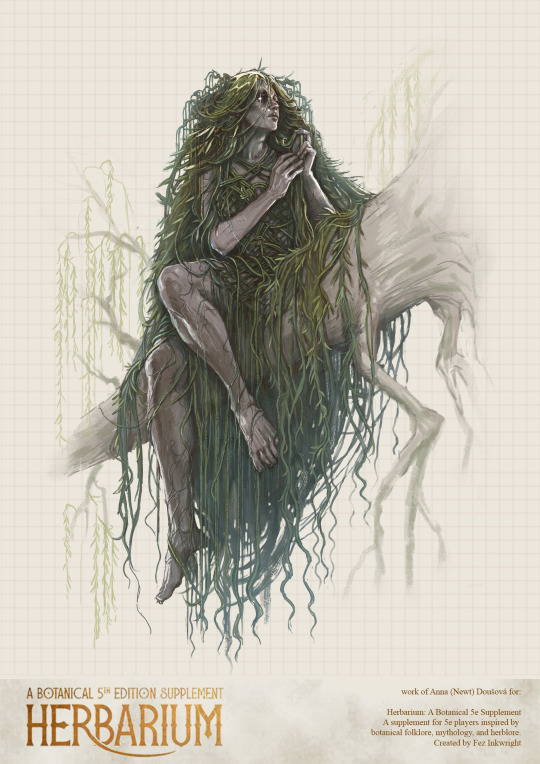
My depiction of Rusalka for the Herbarium 5e supplement by Fez Inkwright.
I was so happy when Fez asked if I wanted to illustrate her for the kicksarter art stretch-goals.
(preorders are still open: https://herbarium.backerkit.com/hosted_preorders )
#rusalka#slavic folklore#slavic mythology#rusalki#dnd 5e#dnd#5e#dnd monster#dnd creature#ttrpg art#fantasy art#character design#czech folklore#čumblr#moje žena <3#annathenewt art#my art
987 notes
·
View notes
Photo

What’s a funerary practice to the damned?
His flesh finally mine, though not in the way I wanted.
What’s a prayer through the lips of the cursed?
I moved in human ways once.
#rusalka#slavic mythology#mythologyart#folklore#nature#forest#art#arts#artist#artists on tumblr#painting#digital art#digital illustration#illustration#slavic folklore#rusalki#mermaid#mermaids#русалка#myart#siren#sirens#fantasy#fairy tales
425 notes
·
View notes
Text

"rusalki are by definition no man’s women in this perspective, they are stuck between the maiden-phase and bride-phase forever [...] washing, moistening, and combing of their hair might thus be a symbolic representation of the endless wedding preparation that will never occur"
"a narrative representation of the desperate desire to fulfill the role that was denied to them in a real life."
From "Rusalki: Anthropology of time, death and sexuality in Slavic folklore" by Jiří Dynda
#my art#rusalka#slavic folklore#slavic mythology#ukrainian folklore#ukrainian culture#rusalki#rusalky#ancestral veneration#witch art#slavic paganism
187 notes
·
View notes
Text
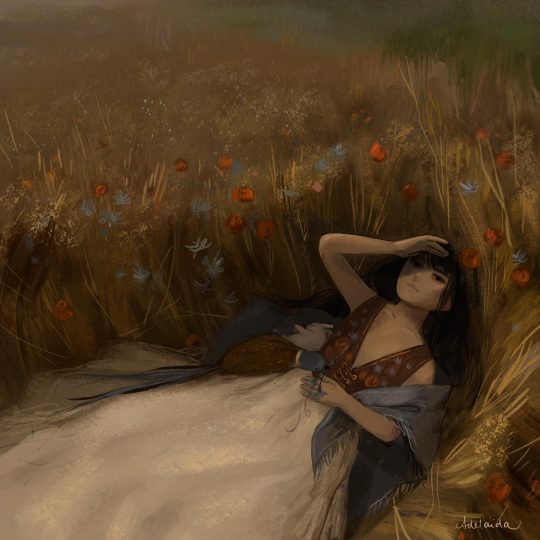
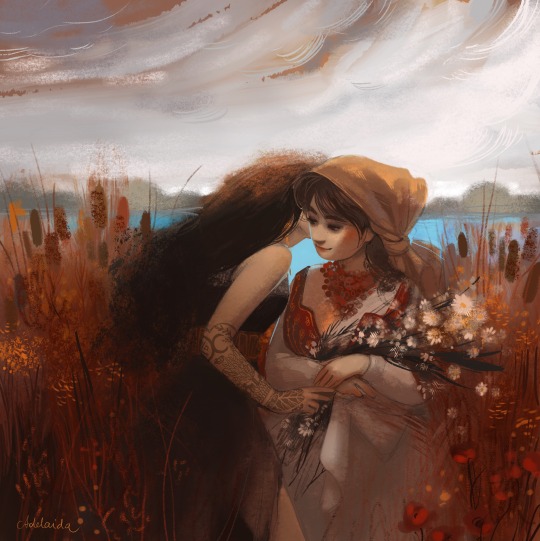
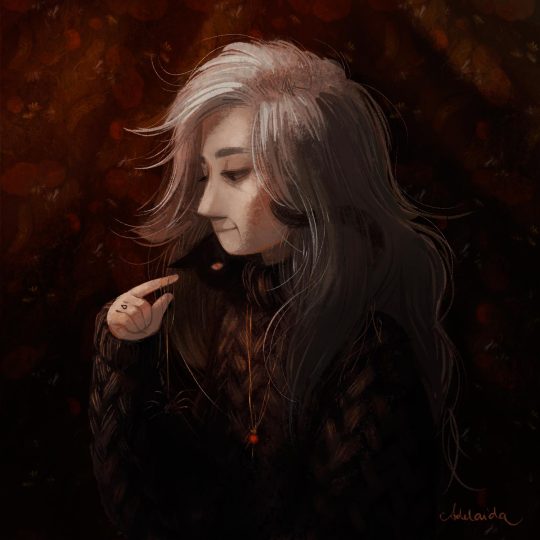

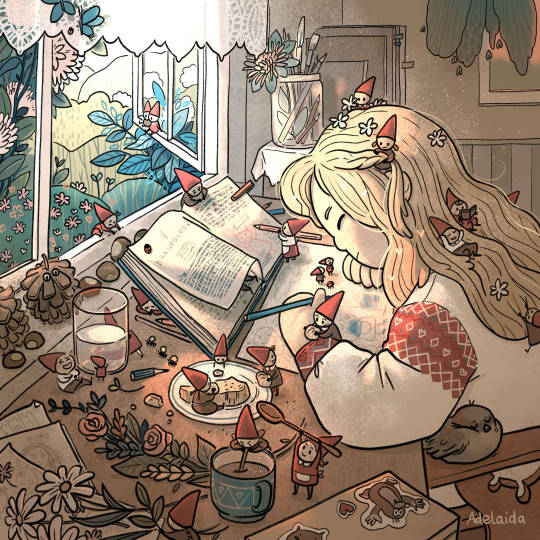
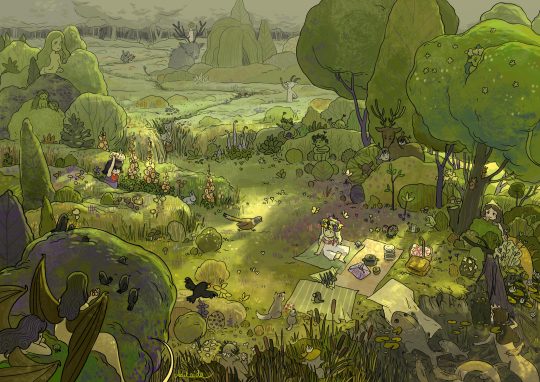
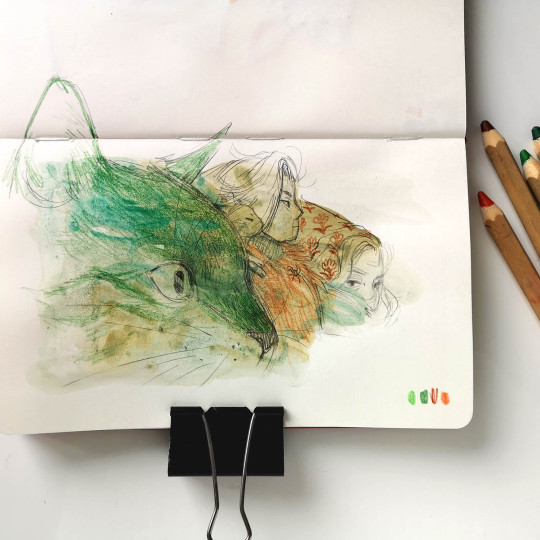


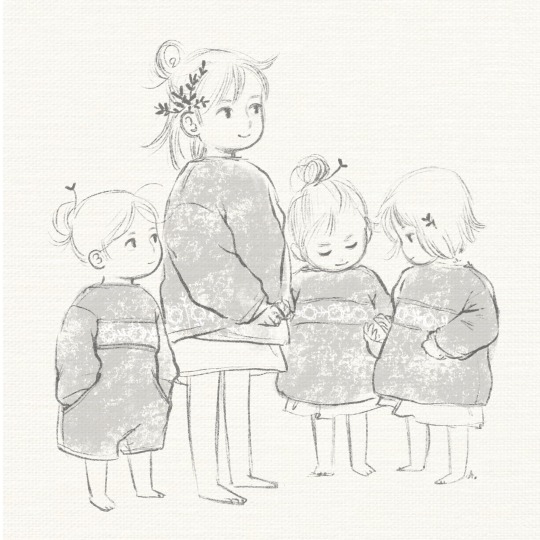

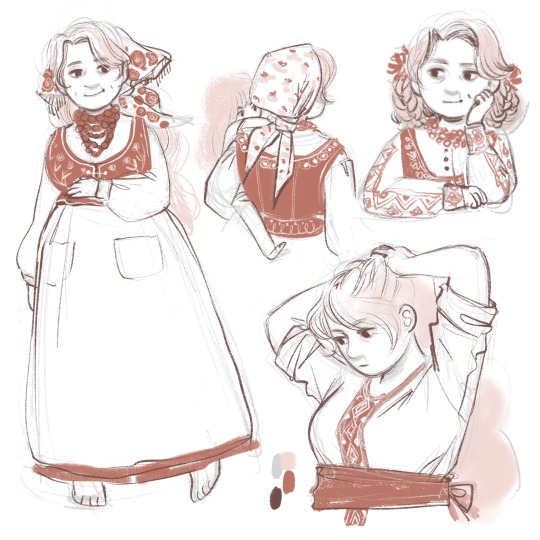
My OCs (♡-_-♡)
#rusalki#adelaida draws rusalki#adelaida art#i'm kinda shocked that i haven't shared them before here?#i probably assumed that people aren't really interested in OCs#more in fanarts#but! all the fanarts' characters were once silly little OCs too#so here we are!#i talk a bit about tem on my ko-fi and twitter#and have *plans* with them#as in comics#also thought about a childrens book bc the kids have a rather carefree life#if we forget about the fact that they are all dead :D
218 notes
·
View notes
Text
A Deep Dive into the Horrifying Rusalki of Slavic Folklore
Would you like to be on the LGH tumblr tag list?
Welcome to Episode 173: A Deep Dive into the Horrifying Rusalki of Slavic Folklore! Today we will be diving headfirst into the algae-filled ponds and rushing green rivers of the Rusalki, learning about their wants, needs, desires, history, and even - about some modern day sightings of them. What’s a Rusalka, you ask? A Rusalka is the Slavic equivalent of a mermaid, but usually depicted without a tail. She is beautiful, alluring, and above all - dangerous. Join us as Aly walks Nat through the horrifying details that make this sea dwelling creature different from the Disney-fied sirens we’re used to.
THIS EPISODE IS SPONSORED!! Find out more about this week’s advertisers below!
This episode is sponsored by Füm. Start the year off right with The Good Habit by going to https://www.TryFum.com/HAUNTED and getting the Journey pack today. Füm is giving listeners of the show 10% off when they use our code “HAUNTED” to help make starting The Good Habit that much easier.
This episode is SPONSORED!!! For 24 meals for just $2.99 per meal, head to http://www.dinnerly.com/offer/haunted and use code “HAUNTED”!
Thanks for sponsoring this episode, Dinnerly!
#Let's Get Haunted#A Deep Dive into the Horrifying Rusalki of Slavic Folklore#Rusalki#Rusalka#Slavic Folklore#Spotify
7 notes
·
View notes
Note
Hi! I'm trying to research slavic mythology, especially the afterlife, and I've come across a place called Prav but i haven't found much information on it as a whole, i was wondering if you had any information on it
Hello!
To the best of my knowledge the idea that the cosmos separates into Prav, Yav and Nav comes from The Book of Veles, a famous forgery pretending to describe pre-Christian Slavic history and religious customs.
I don’t think I’ve ever seen Prav (or Yav) discussed more broadly outside of that context. However the word Nav/Navia does have real cultural background as a term used for to describe spirits of the dead.
Linguistic evidence implies that the early medieval Slavs may have shared a belief in some form of spirit or soul. In discussing these notions, various scholars point towards the word nav/nawie. This term is sometimes seen as being of pre-Slavic origin, and it is derived from Pre-Indo-European cultural heritage and refers to ‘death’ or ‘corpse’. It holds similar meaning in some of the contemporary Slavic languages, although in various (but not all) languages of the Slavs one may observe a shift in its meaning, whereby it refers to the sphere of demonology. For example, in eastern Polish dialects there are various names for rusałki, forest or water demons: mawki, mauki, nawki, miawki, mauki, mavky, niavky, majki. Another term for the spirits of the ancestors, which is also attributed an ancient origin, is lalka (lelka, łątka). It is noteworthy that after death the human soul went to the land of the dead, whose name is reconstructed as Nawia or Lala. (…)
We know very little about the Slavic land of the dead. I have already mentioned that the words nav/nawie, known from textual accounts, referred to dead people or their ghosts and occasionally (in later times) malevolent spirits. The late medieval textual accounts from the Czech area confirm that Navia was the name of the land of the dead among the Western Slavs. ‘To go to Navia’ meant to die and ‘to prepare someone for Nav’, meant to kill
- Slavic Journeys to the Otherworld. Remarks on the Eschatology of Early Medieval Pomeranians by Kamil Kajkowski
A mention of navias can even be found in the Tale of Bygone years, where they serve as a personification of the plague that fell on the town of Polotsk in 1092.
Something very strange occurred in Polotsk, a hallucination: there was a noise during the night: demons were running through the street like people. If anyone came out of their house to look, they were immediately and invisibly wounded by the demons, and died of it, and they did not dare leave their houses. Then they began to appear during the day on horseback, and they themselves could not be seen, but only their horses’ hooves were visible. And this is how they wounded the people of Polotsk and of the region. And this is why the people said: “Navias (навие) are slaying the people of Polotsk”.
- Tale of Bygone Years as found in Sources of Slavic Pre-Christian Religion, red. Juan Antonio Álvarez-Pedrosa
Andrzej Szyjewski in Religia Słowian explores some more cases of navias appearing as malevolent spirits in Slavic folklore, citing bulgarian „twelve nawi”, evil spirits that suck the blood of lying-in women and bring diseases as well as broader Southern Slavic belief in navije/navje, bird-shaped spirits harassing women during pregnancy and in childbirth.
Overall, as you probably can guess I highly recommend reading „Slavic Journeys to the Otherworld. Remarks on the Eschatology of Early Medieval Pomeranians” and then continuing your search from there.
70 notes
·
View notes
Photo

Rusalki by art-by-nemesis
55 notes
·
View notes
Photo
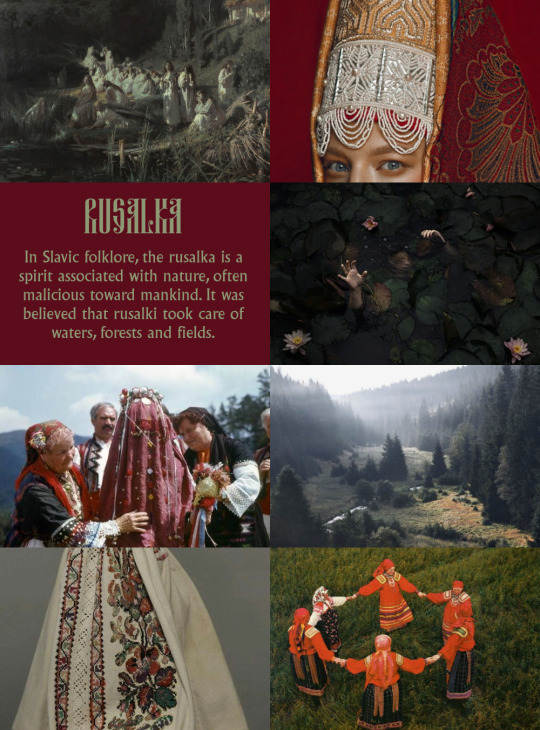
Mythology aesthetic: Rusałka
It was believed that girls who drown themselves because of unhappy love become rusalki. According to some beliefs, a man could also become a rusalka: for example, in the Sosnytsia Raion of the Chernihiv Oblast is believed that people of any sex can be converted into these spirits if they died on Trinity week. Apparently, they retain their gender and become rusalki.
#rusalka#rusalki#aesthetic#slavic#mythology#nature#summer solstice#kupala night#ivan kupala night#ivan kupala day#noc kupaly#waters#water#river#lake#forest#field#slavic folk#slavic folklore#slavic embroidery#mythology aesthetic#russia#ukraine#poland#belarus#slovakia#czech republic#bulgaria#slovenia#eastern european aesthetic
158 notes
·
View notes
Text
z rusały wymoczku będziesz tańczyć // a playlist for rusałki
zaczątek // volkman
rusalka, rusalka / wild rushes // the decemberists
dni błogie // dola
rusalki // lumin
lubelska kolęda // volkman
chodź // księżyc
wiszące skały // ifi ude, bart pałyga, marcin lamch
ballada o głupim wiesławie // żywiołak
kiedy deszcz zaczął padać na zawsze? // wędrowcy~tułacze~zbiegi
obrona włości biełgorajskiej przed janem zamoyskim // królówczana smuga
ile me lat? // księżyc
#some of my favourite music here...#also its the painting my pfp is from!! rusałki by witold pruszkowski!#everyone listen to ifi ude#my playlists#polish folklore#polska#poland#i hope the lyric in the title is right.. and my trascriptions#music#rusalki
8 notes
·
View notes
Text
FOLK MUSIC HELP
OK! My lovely folk music people! I am desperately trying to find folk songs about Rusalki, but the language barrier has left me blocked ToT
I've found an absolutely stellar album, from Kitka's The Rusalka Cycle - Songs Between the Worlds
youtube
I'm pretty darn close to just reaching out to them directly, but I'm wondering if any of y'all know of any folk songs about Rusalki????
It's really rare to get folk music about a monster like this and I am chomping at the bit to learn some and talk about them in my own folk music circles
Also if you know the english translations of the ones you know, I would thank you 1 million times to know what those songs are about 😭
#rusalki#rusalka#folk music#slavic folklore#ukrainian folk music#polish folk music#russian folk music#bulgarian folk music#belarusian folk music#czech folk music#I really am out here trying to tag all the places this folklore shows up#if i left any out let me know!#Youtube
5 notes
·
View notes
Text

This is the second of five redesigns of Slavic Mythology spirits! This time it's the Rusalka!
Usually a sexualized and drowned maiden, I didn't want to go that route. Originally, The Rusalka was a sort of fertility and harvest related nymph, before the course of hundreds of years of oral storytelling and altering her narrative made her the siren-like spirit that can be well known!
I wanted to play off these both, she has flowers, a flower crown in both her real form and her luring form. I wanted to play with her luring her victims differently, and more of an angler fish vibe as well, more of a child begging for help, only to have the victim be met with the scary reality.
What do you think? Make sure to check out my previous post about the Lady Midday/ The Poludnitsa !
5 notes
·
View notes
Photo

Halloween Countdown Day 4:
Beware the old ponds and brooks, for they are the haunt of the Rusalka!
One of my Halloween costumes this year is the Rusalka, the ghostly "mermaid" of Slavic folklore. Rusalka (plural Rusalki) are feminine water spirits bound to water and appear in myths and superstitions all over Eastern Europe and and Russia. In the Pre Christian past, Rusaliki were benevolent water deities who emerged from rivers and ponds in spring to bring rain to the natural world as well as humans' crops.
However, in later centuries Rusalki became associated with ghosts of young women who took their own lives by drowning, usually after suffering abuse and betrayal by men. Therefore, the image of the Rusalka in modern folklore is a vengeful ghostly maiden who lures men to their doom by seducing them and drowning them in ponds or rivers in rural environments. They are also known to tickle their victims to death or force them to dance until they die of exhaustion.
In art, Rusalki appear as beautiful young women dressed in pale coloured long dresses with flower crowns languishing by bodies of water or folk dancing in meadows on summer nights. Rusalki are also said to have legs rather than fish tails, but that they lack feet or cannot stand up on land and must lean on a willow tree. This is where I drew my inspiration for this costume.
The most famous story about this folklore character is Antonin Dvorak's opera Rusalka, a retelling of Hans Christian Andersen's story The Lilttle Mermaid. This opera contains the romantic "Song to the Moon". In this story, the Rusalka is a sympathetic character who naively pursues a selfish and promiscuous man. Don't worry, he gets what he deserves in the end!
My interpretation of the Rusalka is a guardian spirit of the ponds and brooks who will wreak vengeance on anyone who dares pollute or disrespect her habitat.
https://www.youtube.com/watch?v=vhDgYsJ8sAo
(Renee Fleming’s performance of Dvorak’s Song to the Moon)
#Halloween#halloween costumes#halloweencore#costumes#sexy costumes#rusalka#rusalki#russian art#russian folklore#slavic#slavic folklore#slavic culture#eastern europe#folklore#superstitions#water spirit#antonin dvorak#maiden#flower crown#flowercrown#mermaid#mermaidcore#the little mermaid#nature spirit#pond#Forest#willow#meadow#cottagecore#fairytale
35 notes
·
View notes
Text
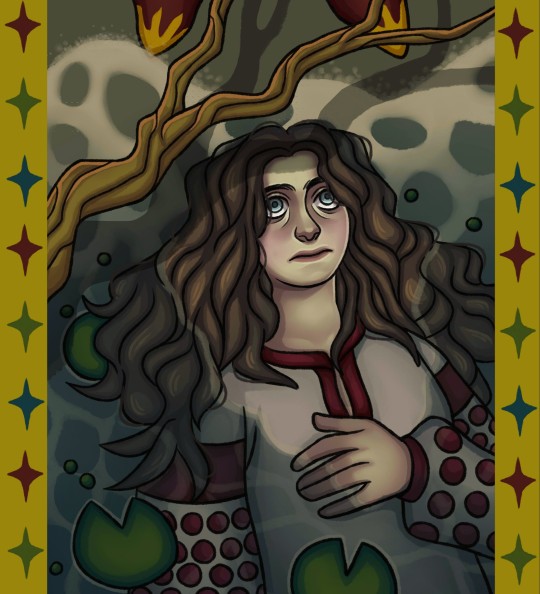
"Rusalki are souls of maidens who died an untimely and often unnatural death, or of those who died in the liminal period between betrothal and marriage. [...] Rusalki are women who did not (or could not, because they died tragically in maidenhood) successfully complete the most important ritual transition in their life and, therefore, they remained somewhere in between and never made it to the other side.”
"The central problem of this category of deceased is their lack of a proper funeral. Because of their unclean status, they were not worthy of a Christian funeral ceremony at the cemetery, because their burial in the consecrated ground might cause drought and famine."
"When their body was found, they were literally “set aside” and buried (or just thrown carelessly) on demarcated places, such as at crossroads, on the boundary strips between fields, alongside roads, in woods and forests (or on the boundaries of forest and field). Sometimes, they were thrown into swamps or rivers. In other words, they are always buried on places distant, marginal, boundary, or otherwise liminal."
From "Rusalki: Anthropology of time, death and sexuality in Slavic folklore" by Jiří Dynda
#slavic mythology#slavic folklore#ukrainian folklore#ukrainian art#rusalka#rusalki#rusalky#folk christianity#varka's art#ancestral veneration
78 notes
·
View notes
Text

Rusalka
These water maidens live in lakes together in small groups as sisters. Unlike other mermaids, they do not grow tails when they dive into the depths. The sisters play in the water, dance and sing with voices enchanting above sea, unknowingly luring men to them who drown when chasing after the beautiful maidens.
24 notes
·
View notes
Text
If you haven't noticed, I've been tending to lean towards an idea that Athetos was not the source of the plague, Ophelia was. I considered a possibility that Athetos was working with Ophelia- that he may have even lied to protect her.
But why would they need to destroy every single person on Sudra?
Besides, Athetos couldn't be working with Ophelia, because of the note where Athetos told his variants to kill Trace. Trace was Ophelia's idea- she killed Katrahaska and took her nanogates so she could make Trace (and besides, Katrahaska was on Athetos' side, too). Now Athetos wants to kill Trace.
I mean, it's entirely possible that Athetos really is just a bloodthirsty murderer, but there's just so much that doesn't add up with the information we currently have. I think the truth lies somewhere in the middle- he's not a good person (even Gir-Tab, his own clone, said "cannot trust self... cannot trust ATHETOS"), more like an anti-hero or something, driven to insanity and desperation by whatever happened when he ventured into the Breach (possibly a result of the pathogen?).
And I still think the Rusalki are the primary villains. Along with the Apocalypse Arms. They're all lying, manipulative, and seemingly willing to do anything to save their own metal alloy coverings. At this point, I'm leaning towards a theory that Athetos' primary goal is to destroy the Rusalki and the Arms and whatever other tech the ancient Sudrans left behind, and the Sudrans who died of the pathogen were... um, "collateral damage," I guess is what all the bad guys say in their quests for vengeance or whatever.
3 notes
·
View notes
Text
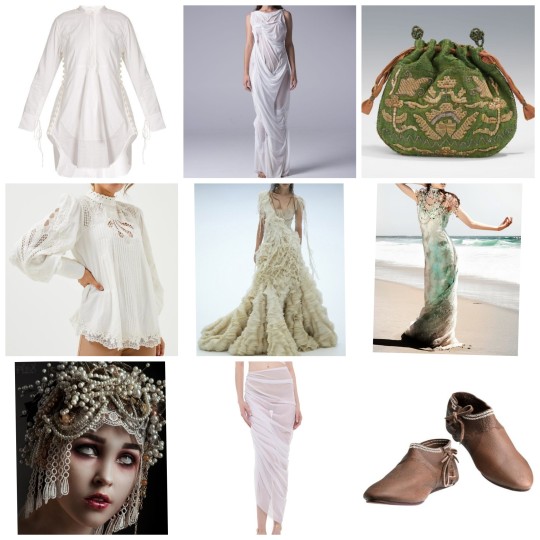

Mythology Weekend - Rusalka
The Rusalka is a Slavic mythological creature who inhabits bodies of water and lures young men to her and drowns them. In some accounts, a Rusalka is the spirit of a young woman who died in or near water and can die peacefully if avenged. Unlike mermaids, Rusalki are depicted with legs and often shown with long, loose flowing hair, which was a sign of evil spirits. They are the most dangerous during Rusalka Week when they leave the water to comb their hair, swing on tree branches, and lure men to their deaths.
#my post#capsule wardrobe#capsule#fashion#style#minimalism#minimalist wardrobe#minimalist fashion#white#beige#green#brown#summer#slavic mythology#slavic myth#myth#mythology#mythology weekend#rusalka#rusalki
24 notes
·
View notes